By Conner Tighe
There are a handful or more houseplants, even those without a green thumb can allow to thrive. Even in the poorest conditions, plants like the pothos can survive and bring some greenery to any room.
In the wild vs. indoors:
Pothos is native to Southeast Asia, where one can find its vines growing along with forest floors and tree trunks as it can climb anywhere and everywhere. “Domesticated” pothos must be trained to climb, but if one is willing to purchase a coco coir pole, owners will find the pothos climbing inside as well. The vine is one of the fastest-growing houseplants and can grow up to 20-40 feet in length if cared for appropriately. It’s not uncommon for pothos to become tangled with themselves, so be sure to shake it loose now and then or secure it along with a structure with hooks. Their lifespan is considerable, with five to 10 years guaranteed.
Lighting, watering, and overall care:
When it comes to watering pothos, patience is key. Allow the soil to dry out between waterings completely. With indirect sunlight producing the best growing conditions, it may take a week or two for the soil to dry out. Another tactic some may find useful is to watch for the drooping of leaves. Drooping means the plant requires water, while black spots on leaves mean there’s too much watering. Although pothos thrives in high humidity environments, as long as the indoor temperature remains above 50 degrees Fahrenheit, the pothos should be fine.
11 species of pothos exist:
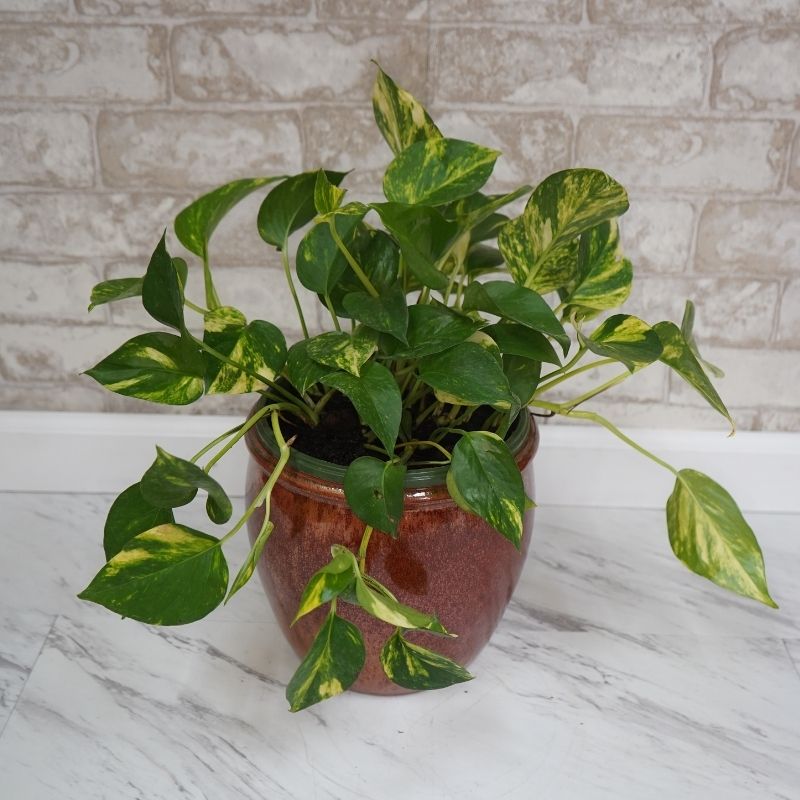
Golden Pothos: Golden pothos is the most common species of pothos. Contrary to its name, the leaves are mainly green but have a streak of “gold” or a light color through them.
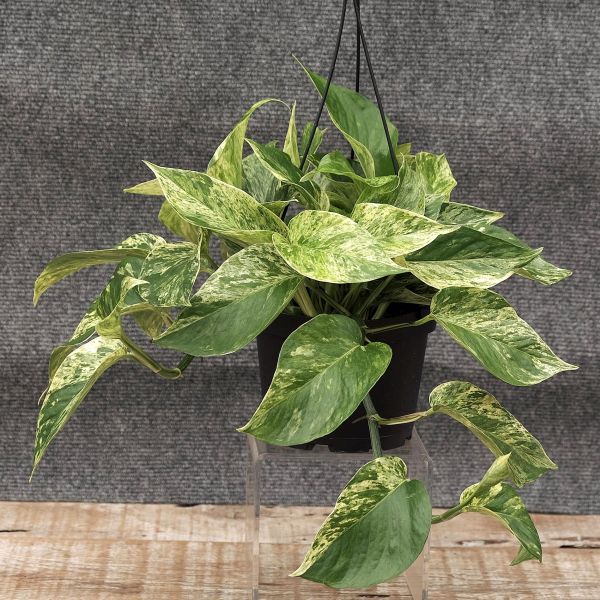
Marble Queen Pothos: Although the Marble Queen Pothos appears similar to the Golden Pothos, the Marble Queen grows slower and has more of a lightened color than green.
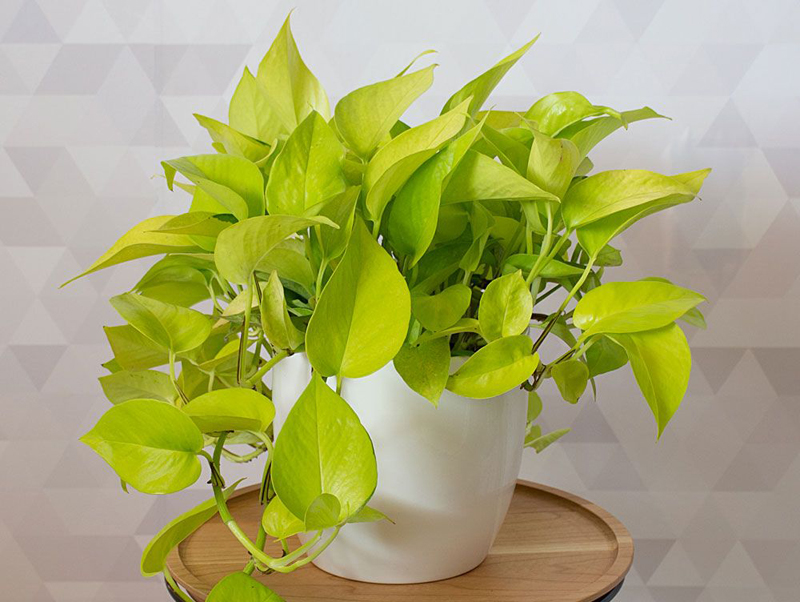
Neon Pothos: The leaves of this species replicate a bright neon color. Although they can grow in poor conditions, they will turn dark green if not given indirect sunlight.
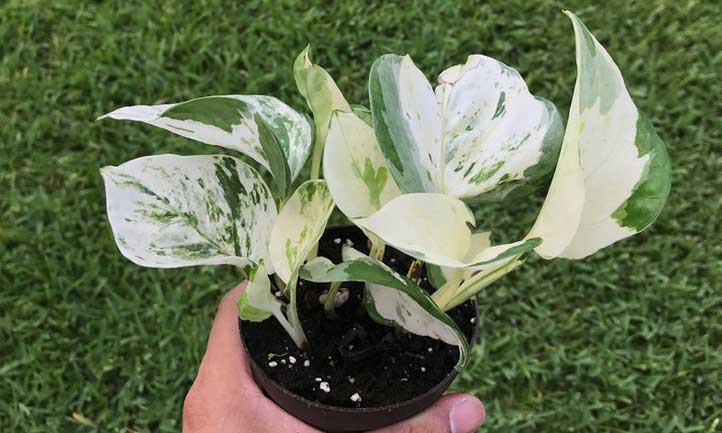
Manjula Pothos: The leaves are heart-shaped like most pothos but do not lie flat. The edges are curved. Manjula is one of the rarest species of pothos.
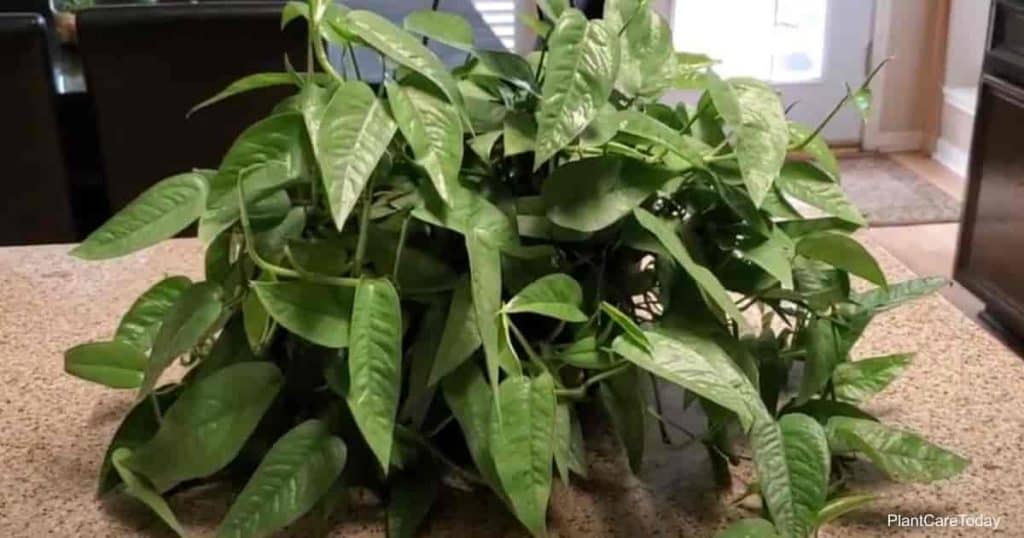
Cebu Blue Pothos: The leaves appear arrow-shaped and the color is metallic.
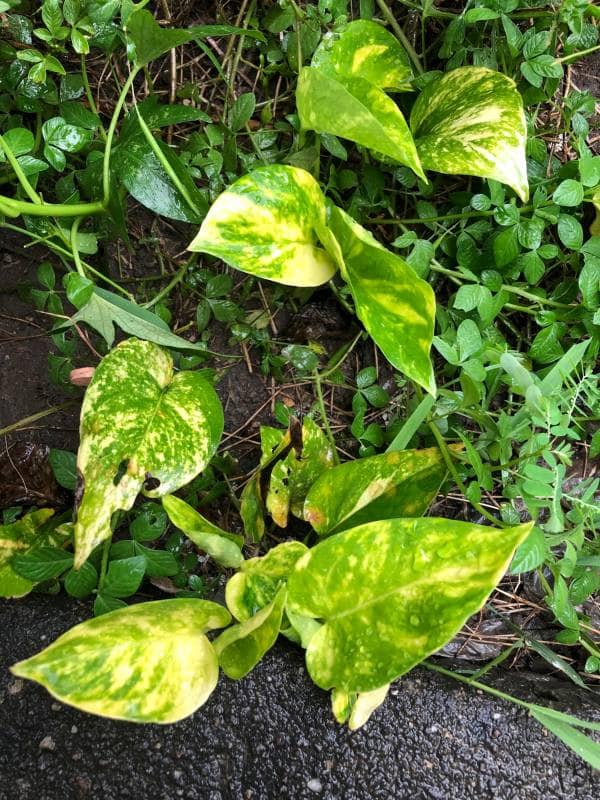
Jessenia Pothos: The colors with Jessenia vary as there are bits and pieces of shades of green. Unlike other pothos, Jessenia will keep its unique color variation regardless of lighting conditions.
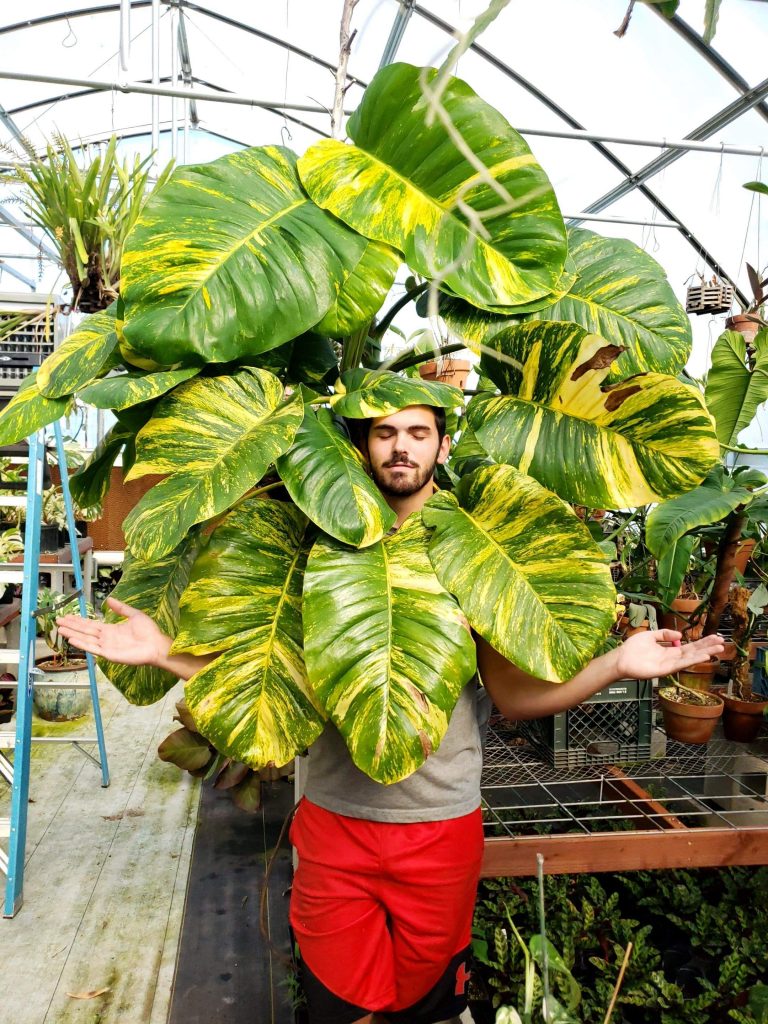
Hawaiian Pothos: The colors of the leaves appear familiar, but the leaves are bigger than most pothos, almost jungle-like.

Trebi Pothos: The green leaves are light and the tips of the leaves curve sideways. Whereas most pothos share hints of yellow and green, the Trebi Pothos has blotches of white.
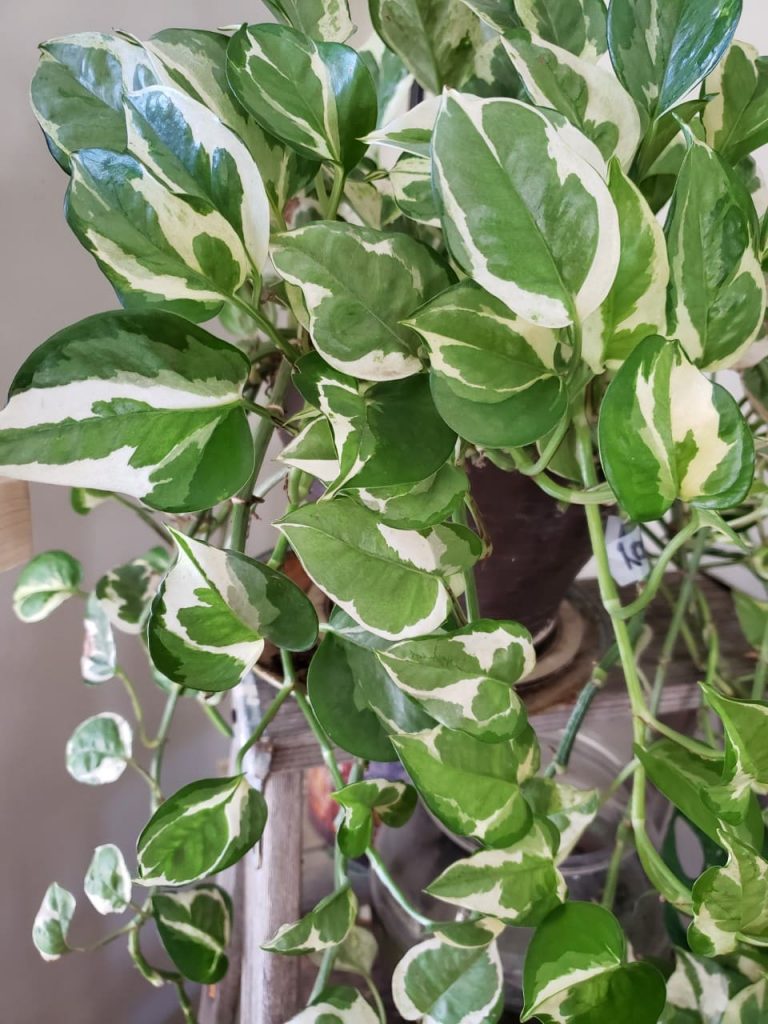
Glacier Pothos: Patterns of cream and green cover these small leaved-vines. The patterns almost look painted.
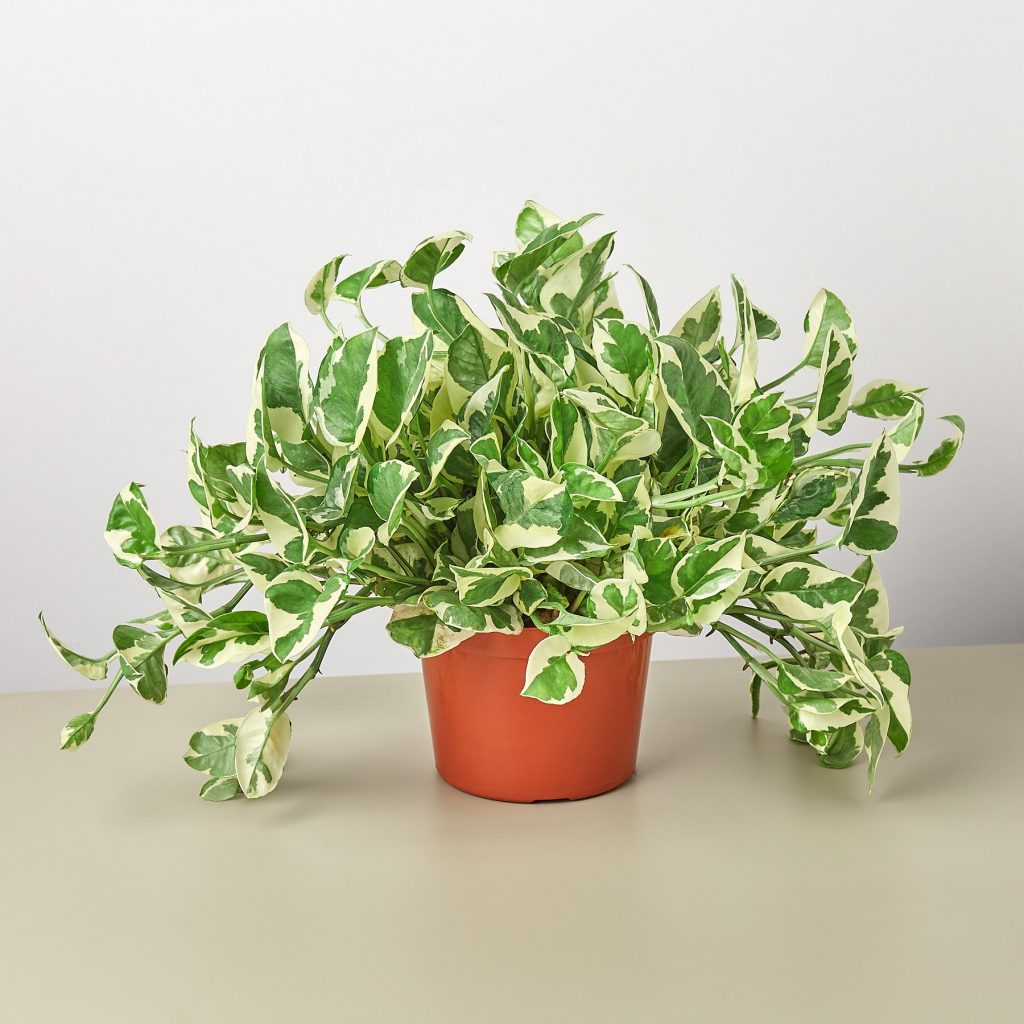
N-Joy Pothos: This species is of the most recent to have been bred by experts. No two leaves are the same, while some form shapes and pictures within the leaves.
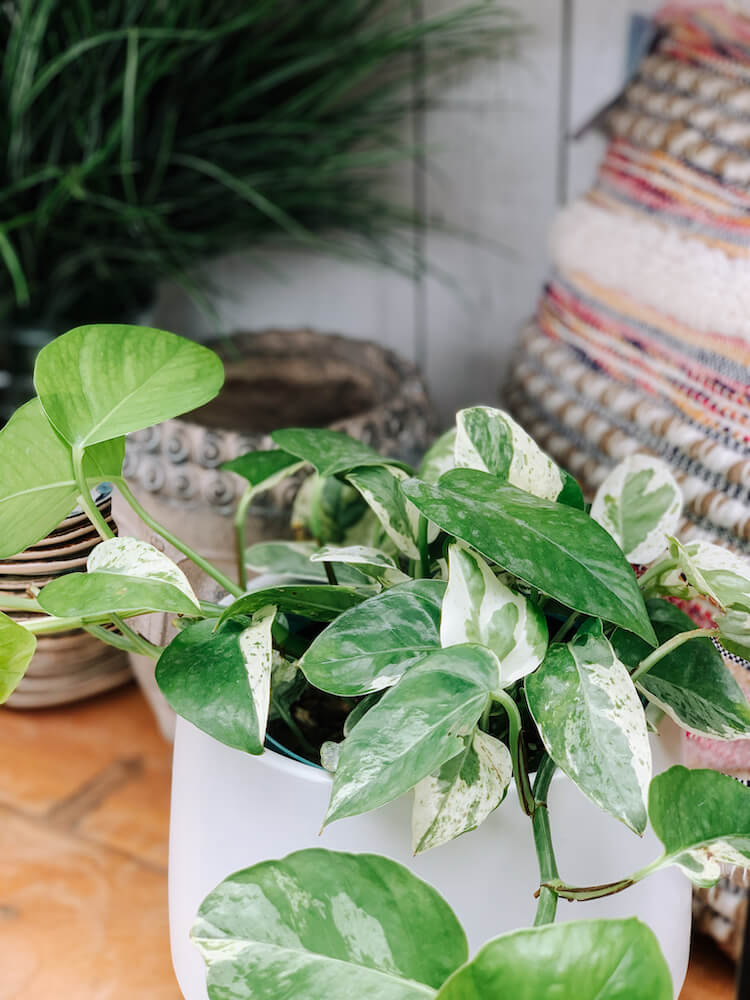
Pearls and Jade Pothos: The leaves usually have a dark green center with a white or cream pattern taking the outer edges.
Sources: The Sill, The Sill, SFGATE, The Spruce
Images: English Gardens, Nature Hills Nursery, Cape Gazette, Epic Gardening, Plant Care Today, Teak and Terracotta, PlantMadness, Dave’s Garden, ChooseYourPlant, Walmart, Anna’s Flowers
Featured Image: PlantMadness
